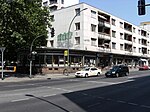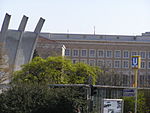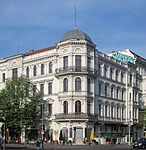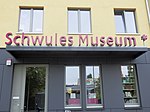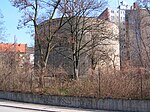Kreuzberg (Tempelhofer Berge)
Friedrichshain-KreuzbergHills of Berlin

The Kreuzberg (German for Cross Mountain) is a hill in the Kreuzberg locality of Berlin, Germany, in former West Berlin. It rises about 66 m (217 ft) above the sea level. It was named by King Frederick William III of Prussia after the Iron Cross which crowns the top of the Prussian National Monument for the Liberation Wars, designed by Karl Friedrich Schinkel, on its inauguration on 30 March 1821. On 27 September 1921 the borough assembly of the VIth borough of Berlin decided to name the borough after the hill. The borough was subsequently downgraded to a locality in 2001.
Excerpt from the Wikipedia article Kreuzberg (Tempelhofer Berge) (License: CC BY-SA 3.0, Authors, Images).Kreuzberg (Tempelhofer Berge)
Am Weinhang, Berlin Kreuzberg
Geographical coordinates (GPS) Address External links Nearby Places Show on map
Geographical coordinates (GPS)
| Latitude | Longitude |
|---|---|
| N 52.4875 ° | E 13.381388888889 ° |
Address
Nationaldenkmal für die Befreiungskriege
Am Weinhang
10965 Berlin, Kreuzberg
Germany
Open on Google Maps



